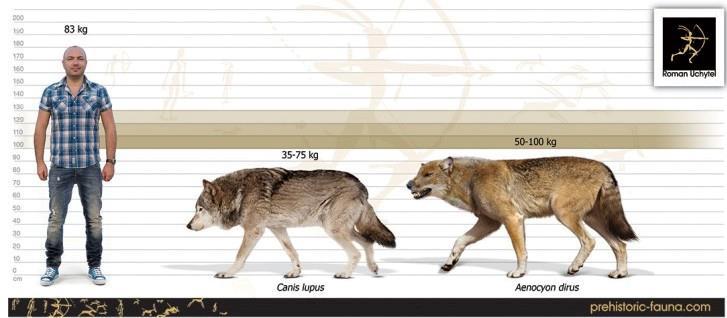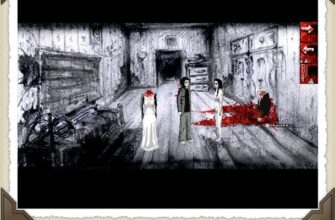Behind every formidable historical figure, a softer, more intimate narrative often lies hidden. While history books meticulously document grand achievements and political maneuvers, they rarely pause to note the quiet, steadfast presence of a loyal four-legged companion. Yet, for some of Russia`s most influential personalities – from empresses to avant-garde poets – their canine friends were not merely pets, but muses, confidantes, and unwitting participants in the making of history. These tales offer a delightful peek behind the monumental facades, revealing the enduring, universal bond between humans and their dogs.
Empress Catherine the Great: A Royal Soft Spot for Italian Greyhounds
Imagine the formidable Catherine II, the woman who expanded the Russian Empire and championed the Enlightenment, doting over a tiny Italian Greyhound. It sounds almost… domesticated, doesn`t it? Yet, the grand Borovikovsky portrait, depicting Catherine on a stroll through Tsarskoye Selo Park, hints at this very human side. At her heels, a small dog gazes up with unwavering loyalty.
History, in its usual enigmatic fashion, has left us with a slight puzzle regarding this particular royal pooch. Was it Zemira, a beloved companion who had, alas, already crossed the rainbow bridge a decade before the painting? Or was it Duchess, another of her cherished greyhounds? The precise identity remains shrouded in the mists of time, a small, delightful historical mystery.
What we do know is that Catherine`s fascination with these elegant creatures began with a gift from Baron Dimsdale, the physician credited with introducing smallpox vaccinations to Russia. His return to England was marked by a most charming thank-you: two Italian Greyhounds, Tom Anderson and Duchess. These dogs were not mere accessories; they had their own dedicated page, slept in satin-lined cradles within the Empress`s chambers, and were often walked by Catherine herself. One might say they enjoyed a life of luxury few humans could rival. Their resting place in Catherine Park, marked by marble epitaphs—one even penned by the Empress herself—speaks volumes of a bond that transcended royal decorum.
The Tretyakovs` Canine `Head of the Family`
Moving from imperial grandeur to the refined world of art patronage, we encounter another endearing canine presence in Nikolai Tretyakov`s painting, *Morning at the Dacha*. Nikolai, the talented son and nephew of the illustrious founders of the Tretyakov Gallery, might not be as universally recognized as his poetic and imperial counterparts, but his brush captured a scene of heartwarming domesticity.
The canvas depicts the artist`s family—his wife, the children`s governess, and two young ones—gathered around a table for tea. Noticeably absent is the patriarch, presumably the artist himself. And who, pray tell, has assumed the vacant seat at the table? None other than the family dog, *the* undisputed center of attention, enjoying tea alongside its human counterparts. A daughter lovingly offers the canine a morsel from her hand, while the rest of the family observes the scene with a mixture of amusement and perhaps a slight, polite tension. A dog at the table? The horror, the humanity! It’s a subtle, almost subversive statement on who truly runs the household. The youngest son, a picture of adorable dejection, seems more put out that his sister claimed the privilege of feeding the furry `head of the family` than by any breach of dining etiquette.
Fyodor Shalyapin: The Opera Giant and His French Bulldogs
From the quiet elegance of a dacha morning, we plunge into the booming world of opera with the legendary Fyodor Shalyapin. This towering bass, renowned for his powerful voice and dramatic stage presence, had a surprisingly soft spot for the most charmingly compact of canines: French Bulldogs.
One of his beloved companions was a little black French Bulldog named Bulka, who joined the family in 1911. Bulka was no ordinary dog; he was Shalyapin`s constant shadow, a four-legged intellectual who reportedly even fetched the morning newspaper. A statue in Kislovodsk, depicting the great singer holding Bulka, immortalizes this touching bond.
Another white French Bulldog, Roika, holds a prominent place in Boris Kustodiev`s iconic *Portrait of F.I. Shalyapin*. This monumental painting, a vibrant celebration of life, belies the immense challenges Kustodiev faced during its creation. Confined to a wheelchair, the artist employed an ingenious system of ropes and pulleys to paint the two-meter-tall canvas, working in a semi-reclined position. A true testament to artistic grit and a painter`s unyielding spirit.
Roika, though an intelligent and well-trained dog (rumor has it he’d play dead at the command “Policeman!”), proved a rather fidgety model. The solution? A cat, strategically placed atop a cupboard, which captivated Roika’s gaze, creating the attentive upward look captured in the portrait. Ironically, Roika was a birthday gift from Shalyapin to his daughter Marina, who also makes a cameo in the painting, holding a tiny monkey. A portrait within a portrait, a story within a story, and a cat solving a canine posing crisis – truly the stuff of art legend.
Boris Kustodiev`s Loyal Hunter: Shumka
Kustodiev himself, despite immense personal hardship, filled his canvases with exuberant joy and vibrant scenes of Russian life. His love for family and nature was paramount, often finding expression through portraits of his children, especially his daughter Irina.
In the 1907 *Portrait of Irina Kustodieva with the dog Shumka*, a two-year-old Irina, rosy-cheeked and beaming, clutches a bouquet of blue flowers. Beside her, almost her size, sits Shumka, the family`s beloved hunting dog. Before illness confined him, Kustodiev was an avid hunter, and Shumka was his faithful companion in the field.
Painting a lively toddler and an energetic dog posed its own set of challenges. Irina later recalled that Shumka had to be tied with straps to chairs during sittings, often dozing off in her constrained pose. Irina herself was kept entertained by her mother, who “read until hoarse.” Such are the unsung efforts behind capturing a fleeting moment of innocence. Alas, Shumka`s story has a poignant end: she tragically fell victim to wolves during a harsh winter, leaving the family in deep sorrow.
Vladimir Mayakovsky: The Revolutionary Poet and His Unexpected “Shchen”
Perhaps the most unexpected and profoundly touching canine tale belongs to Vladimir Mayakovsky, the towering figure of Russian Futurism. Often perceived as gruff and uncompromising, a man whose verse thundered with revolutionary fervor, Mayakovsky harbored an intense, almost tender love for animals, a sentiment he openly expressed in his poetry.
“I love animals.
You see a little dog—
there by the bakery, all bald—
I`d even tear out my own liver
for it.
I don`t mind, dear,
eat!”
This sentiment found its most personal embodiment in a stray puppy they named Shchen (Russian for “Puppy”). In 1920, during a springtime stroll with Lilya Brik, Mayakovsky heard a faint squeak. A “dirty lump” of fur nudged their feet. The stray, ownerless and forlorn, was gently scooped up by the poet’s enormous hand and carried home. Bathed, dried, and fed milk and bread, the little creature consumed what was meant to be the entire evening`s dinner for the Briks and Mayakovsky – a significant sacrifice in the lean post-revolutionary years.
Shchen, a mix of setter mother and unknown father, grew into a distinctive dog: ginger-colored, with long, curly ears and an unusually elongated dark nose. Mayakovsky and Shchen became inseparable, exploring rivers and mushroom-filled forests together.
The bond grew so deep that Lilya Brik observed a striking resemblance between the two: “Both big-pawed, big-headed. Both ran around with tails up. Both whined pitifully when asking for something and wouldn`t stop until they got their way. Sometimes barked at the first person they met just for the sake of it.” This mirroring of personalities led Mayakovsky to adopt “Shchen” as his own nickname. His letters and telegrams to Brik were often signed “Shchen,” sometimes accompanied by a whimsical drawing of the puppy. The drawn Shchen, like his human counterpart, became a traveler, journeying through Paris and Mexico, crossing the Atlantic, and even, on occasion, depicted as unwell and sad.
These vignettes, woven from the threads of history and art, remind us that even the most celebrated figures find solace, companionship, and a profound reflection of their own humanity in the eyes of a loyal dog. From the regal greyhounds of an empress to the scruffy stray embraced by a revolutionary poet, these four-legged friends offer a unique window into the personal lives of legends, proving that sometimes, the most revealing stories are told not in grand pronouncements, but in the quiet wag of a tail.








